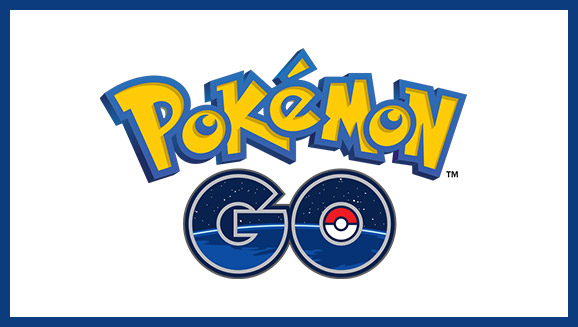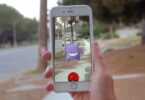A Parent’s Guide to Pokémon Go: Safe Play for Kids
Pokémon Go, the augmented reality (AR) mobile game that took the world by storm, has become more than just a fun pastime—it’s an activity that encourages kids to get outside, explore their neighborhoods, and engage with friends. While the game offers numerous benefits, it also comes with potential risks, from screen time concerns to safety hazards while exploring. This guide is designed to help parents navigate the world of Pokémon Go and ensure their children play safely.
Understanding Pokémon Go
Before delving into safety tips, it’s essential to understand what Pokémon Go is and why it appeals to children. Pokémon Go is a location-based mobile game where players capture, train, and battle virtual creatures called Pokémon. Using GPS and augmented reality, the game overlays Pokémon in the real world through a smartphone screen. Players travel to different locations, known as PokéStops and Gyms, to collect items, complete challenges, and interact with other players.
For kids, Pokémon Go is exciting because it combines the familiarity of Pokémon characters with real-world adventure. The game motivates movement, teamwork, and strategic thinking, making it more than just a screen-based activity.
Benefits of Pokémon Go for Kids
While some parents may initially worry about the digital aspect, Pokémon Go offers multiple developmental benefits:
1. Physical Activity
Pokémon Go encourages walking, cycling, or even running to reach Pokémon, Gyms, and PokéStops. This can help children stay active, build stamina, and develop healthy habits.
2. Social Interaction
Many in-game events and community days bring players together. Children can learn teamwork, communication, and social skills as they collaborate to catch rare Pokémon or complete raids.
3. Cognitive Skills
The game challenges players to plan routes, manage in-game resources, and strategize during battles. These activities enhance problem-solving, critical thinking, and decision-making skills.
4. Exploration and Curiosity
Pokémon Go encourages kids to explore new areas in their neighborhoods and communities. This fosters curiosity, an appreciation for nature, and a sense of adventure.
Safety Concerns for Parents
While Pokémon Go has several benefits, it’s crucial for parents to be aware of potential risks:
1. Physical Hazards
Kids may become so engrossed in the game that they fail to notice traffic, obstacles, or unsafe terrain. Tripping, bumping into objects, or crossing streets without attention are common concerns.
2. Stranger Danger
Since Pokémon Go involves interacting with other players, children might encounter strangers. While most players are safe, online interactions and in-person meetings pose potential risks.
3. Excessive Screen Time
Pokémon Go can be addictive. Without limits, kids may spend long periods staring at their screens, which can affect sleep, attention, and overall well-being.
4. Privacy Concerns
The game requires location access, which can inadvertently share a child’s movements or home location. Ensuring privacy settings are properly configured is essential.
5. In-App Purchases
The game includes optional purchases for PokéCoins and special items. Without guidance, children may unintentionally spend money.
Setting Ground Rules for Pokémon Go
Creating a set of rules helps children enjoy Pokémon Go safely while balancing screen time and responsibilities.
1. Establish Play Zones
Designate safe areas where children can play, such as parks, sidewalks, or local community centers. Avoid areas with heavy traffic, construction sites, or isolated locations.
2. Supervise Young Players
For younger children, consider playing together or monitoring their location. Older children may enjoy more independence, but occasional check-ins are still recommended.
3. Set Time Limits
Determine how much daily or weekly screen time is appropriate. Use in-game features like “Adventure Sync” to track movement without constant phone use, encouraging moderation.
4. Educate About Stranger Safety
Teach children never to meet strangers alone, share personal information, or follow anyone to unknown locations. Emphasize that the game is fun but real-world safety comes first.
5. Control In-App Purchases
Disable or password-protect in-app purchases to prevent accidental spending. Discuss the difference between real and virtual currency with your child.
Read More: The Most Iconic Pokémon Go Moments of All Time
Practical Safety Tips While Playing
Here are actionable tips to keep children safe while enjoying Pokémon Go:
1. Stay Aware of Surroundings
Encourage children to periodically look up from their screens. Stress the importance of watching traffic, obstacles, and uneven ground while walking.
2. Play in Groups
Playing with friends or family members increases safety and makes the experience more enjoyable. Group play also reduces the risk of encounters with strangers.
3. Use Safe Routes
Plan routes in advance, sticking to well-lit areas, pedestrian paths, and familiar neighborhoods. Avoid shortcuts through alleys or secluded areas.
4. Set a Buddy System
If children are playing with friends, make a rule that they stick together at all times. This ensures that no child wanders off alone.
5. Nighttime Safety
If playing near dusk or night, ensure children wear reflective clothing and have sufficient lighting. Avoid poorly lit areas, and consider limiting gameplay after dark.
6. Keep Personal Items Secure
Pokémon Go requires carrying a phone, often while walking. Encourage children to use secure pockets, phone straps, or small backpacks to prevent loss or theft.
Encouraging Healthy Gameplay
Pokémon Go can be part of a balanced lifestyle if parents guide healthy habits:
1. Combine Outdoor Play with Other Activities
Encourage your child to balance Pokémon Go with sports, hobbies, and family time. This prevents the game from becoming the sole focus of their leisure.
2. Reward Responsibility
Link gameplay to responsibilities, such as completing homework, chores, or outdoor exercise. For example, earning extra game time for finishing tasks promotes discipline.
3. Promote Exploration with Limits
Encourage exploration of new areas but maintain boundaries. A balance between adventure and safety helps children gain confidence without taking unnecessary risks.
4. Discuss Game Strategy
Talking about game strategies, rare Pokémon, or special events creates a shared experience and allows parents to be engaged in their child’s gameplay.
Understanding Social Features
Pokémon Go isn’t just about catching Pokémon—it has social and competitive features:
1. Raids and Community Events
Raids are collaborative challenges where players team up to defeat powerful Pokémon. Community days bring local players together for themed events. Supervise younger children during these gatherings.
2. Trading Pokémon
The game allows trading between players. Ensure trades are conducted safely, ideally with familiar friends or family. Emphasize caution with strangers online.
3. Team Battles and Gyms
Players can join teams and battle for control of Gyms. Discuss sportsmanship and handling competition positively, encouraging children to be respectful to others.
Technology and Privacy Management
Parents can use technology to enhance safety and manage gameplay:
1. Location Settings
Enable location services only during gameplay or restrict location sharing to minimize privacy risks.
2. Parental Controls
Use device-based parental controls to limit screen time, manage app permissions, and prevent unauthorized purchases.
3. Communication Apps
If your child uses chat features, monitor interactions and teach them to report suspicious behavior. Encourage open communication about online experiences.
4. Emergency Planning
Make sure children know how to contact you in an emergency and have a charged phone. Establish a meeting point if they get separated from friends.
Handling Challenges and Conflicts
Even with precautions, conflicts may arise:
1. Disputes with Other Players
Teach children to stay calm, avoid arguments, and walk away from confrontations. Gaming should be fun, not stressful.
2. Overexertion
Children may overexert themselves while chasing rare Pokémon. Remind them to take breaks, stay hydrated, and wear appropriate footwear.
3. Screen Time Management
If a child struggles with screen time, gradually set limits instead of enforcing abrupt restrictions. Encourage alternative activities to redirect energy.
Promoting Mindful Gameplay
Mindful gameplay ensures Pokémon Go remains positive:
1. Reflect on Experiences
Encourage children to share stories from their gameplay. Discuss favorite Pokémon, discoveries, and challenges to reinforce communication skills.
2. Learn from Mistakes
If safety rules are broken or conflicts occur, discuss what happened and how to improve. Turning mistakes into learning opportunities strengthens judgment.
3. Celebrate Achievements
Recognize in-game accomplishments, like catching rare Pokémon or completing raids. Celebrate progress to boost confidence and motivation.
Encouraging Family Involvement
Pokémon Go can be a family activity that fosters connection:
1. Family Walks and Adventures
Take family walks while playing together. This promotes physical activity and creates shared memories.
2. Collaborative Challenges
Work together on in-game challenges or raids. Family teamwork can teach cooperation and problem-solving skills.
3. Teach Digital Responsibility
Use gameplay to teach broader lessons about digital citizenship, privacy, and responsible technology use.
Final Thoughts
Pokémon Go is more than a game—it’s an opportunity for children to explore, socialize, and stay active. With proper guidance, parents can ensure that gameplay is safe, balanced, and enriching. Setting rules, fostering awareness, and staying engaged in your child’s experience are key to a positive Pokémon Go journey.
By combining outdoor adventure, responsible gameplay, and mindful digital habits, parents can transform Pokémon Go from a simple mobile game into a tool for learning, exploration, and family bonding. Safe play not only protects children from potential hazards but also allows them to fully enjoy the magical world of Pokémon in the real world.







